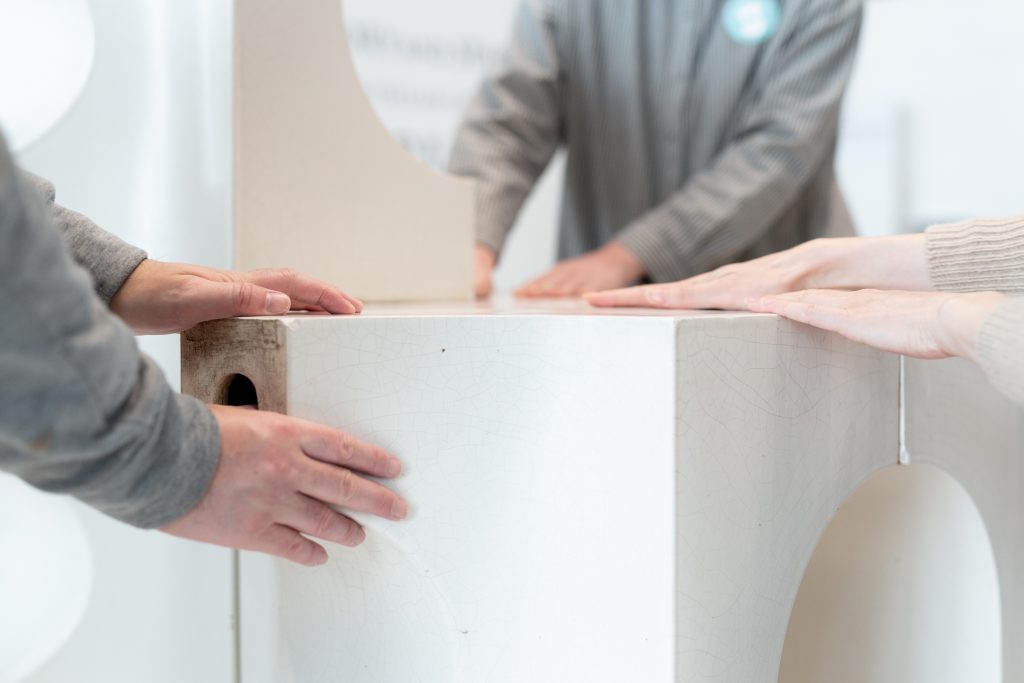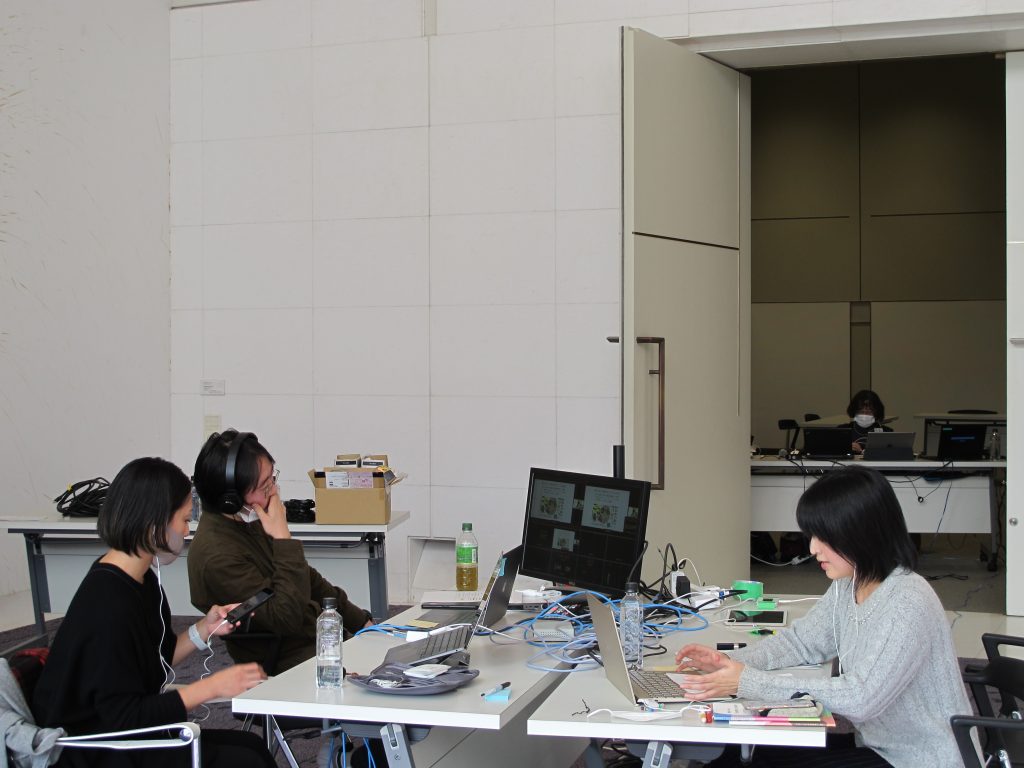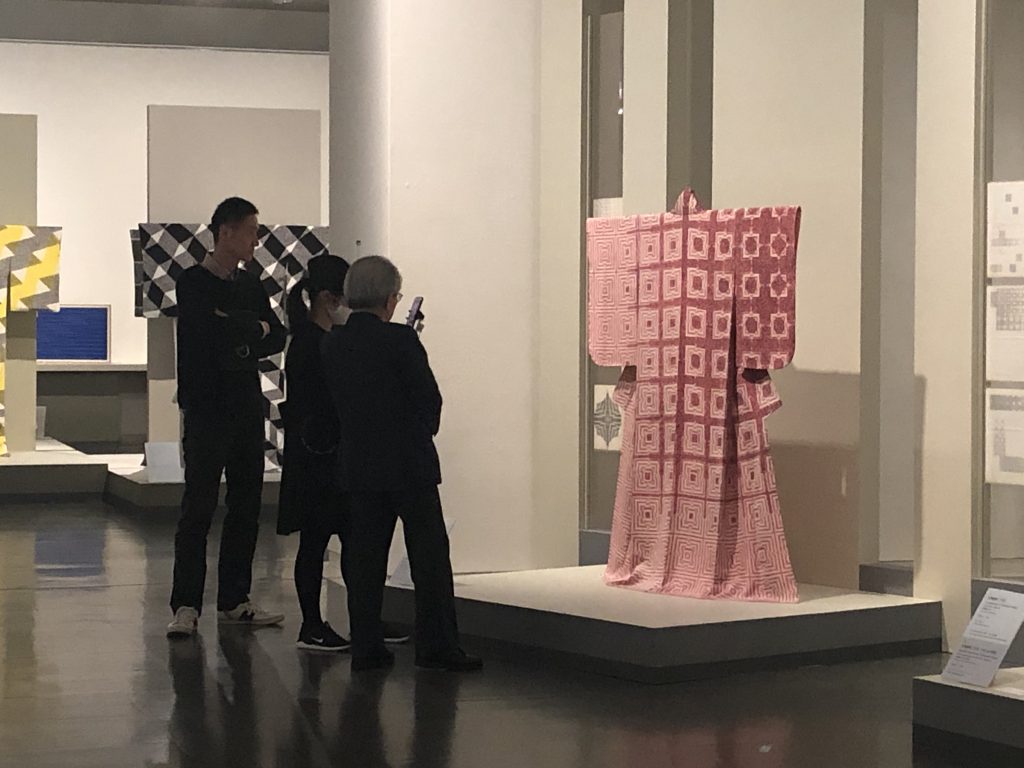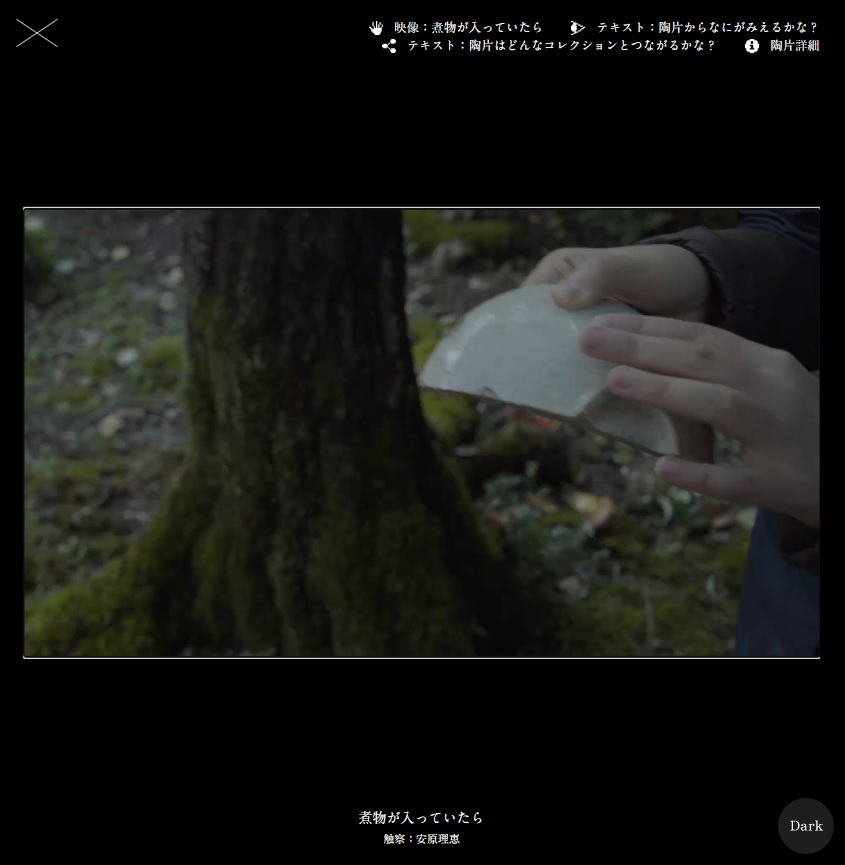
June 8, 2021
Appreciating Art through Touching In the Time of the Coronavirus – An Example from the National Museum of Modern Art, Kyoto
[2021.6.8]
Educator,
National Museum of Modern Art, Kyoto
Saki Matsuyama
Introduction
The National Museum of Modern Art, Kyoto (MoMAK), where I work, reopened on May 26, 2020 – almost three months since its temporary closure began on February 29, 2020. By following the guidelines announced by the Japanese Association of Museums, such as limiting the number of visitors, placing hand sanitizers at the entrance, thermo check upon entry, and having our staff wear masks and face shields; we have been able to remain open to this day. On the other hand, during the past year, we were perpetually exploring new ways to continue our face-to-face immersive learning programs such as lectures, gallery talks, workshops, and school group visits while taking the necessary measures to prevent the risk of spreading the coronavirus.
Reinstating Educational Programs, and Online Ventures
Our face-to-face programs at the museum gradually restarted in June 2020, first, with the screening of MoMAK FILMS, followed by the membership meeting in August, and lectures from November onwards at less than 50 percent capacity. School visits had drastically decreased due to the cancellation of school excursions throughout the country, but as Fall rolled around, students from elementary and middle schools and universities within Kyoto gradually began coming back for training and extracurricular activities. In granting admission, we asked that they visit in smaller groups in varying time slots, as well as a no talking/no discussing rule while inside the exhibition spaces. Instead, we offered a short lecture at the lobby by our museum staff or provided online sources for the exhibition.
The coronavirus pandemic created an opportunity for us to become proficient with various online undertakings, such as live streaming lectures and gallery talks, and making videos about how to appreciate and enjoy the exhibited artworks. Like the majority of museums in Japan, there was no one in our staff that specialized in IT and the overall administration of online programs such as these. In this predicament, we had our tech savvy colleagues, team up with the public relations staff to gather the equipment, and from there, they educated themselves through trial and error (Image 1).
The most receptive of these online ventures is the official Instagram live streaming gallery talks by our curators as they walk through and introduce highlights of the exhibition. On a platform like Instagram, we are able to interact and instantaneously answer questions from viewers.
The fact that we can do all of this with one smartphone is beneficial from both human resources and budgeting perspective. Before the pandemic, we normally held two face-to-face gallery talks per exhibition period with an audience capacity of 20 people per session (Image 2). Compared to that, the live streaming sessions succeeded in gathering an average of over 920 views※. Viewers can access the contents virtually from anywhere with internet service and a device. This method is simultaneously beneficial for the museum as a PR tool to attract more visitors in the future. Not only are online programs convenient during the pandemic, but we believe it is a catalyst for engaging with people who are physically unable to visit the museum; whether they are parents who are raising young children or are hospitalized and immobile. We will continue this endeavor moving forward even after the pandemic.
※Average number of views during the live streaming sessions (total of seven sessions) during July 2020-January 2021 (according to my calculations)


“Opening the Senses” in the Time of the Pandemic
This past year was filled with opportunities to explore different methods for utilizing the internet, but our workshops where a number of people gather in person have unfortunately been halted indefinitely due to the increased risk of infection.
One of the undertakings we have put our efforts into as part of the inclusive learning program is “Opening the Senses: Project to Promote Innovative Art Appreciation Programs.” This project started in conjunction with universities and schools for the blind in 2017 as an effort to develop new and innovative ways to appreciate artworks beyond just “seeing.” Until now, we have continually held participatory workshops where blind and non-blind visitors were encouraged to touch three-dimensional artworks/ceramics with their hands, as well as hear what kind of sounds are made to the touch (Image 3). Here, we prioritize two ways to maximize their experience. The first, is for visitors to use their senses such as touching and listening to fully experience the size, texture, weight, temperature, and fingerprints left by the artists themselves. Secondly, to share and discuss their own experiences and impression with other participants. Perhaps they can help each other “see” from a perspective that would not have been possible individually.

Unfortunately, in April 2020, the first state of emergency was declared, and the public was asked to avoid the “3 C’s” (Closed spaces, Crowded places, Close-contact settings). The bedrock of our venture included “people gathering together,” “speaking in close proximity,” and “touching the same object”- all aspects of it had to be reevaluated due to the restriction. To our misfortune, April was also the month when the “ABC Project” was scheduled to launch – a three-way collaborative effort to create a new “viewing” program by artists, persons who are visually impaired, and museums- and we had no choice but to forge through the impact of COVID-19 by trial and error.
“ABC Project”—a Collaborative Effort by Artists, Blind/Partially Sighted Persons, and the Museum Curators
The “ABC Project” is made up of three integral pillars – “Artist,” “Blind/partially sighted,” and “Curator.” To drastically change the way people traditionally “view” art through seeing, our aim is to create a program that highlights one specified theme (artist or genre) per year by working with persons who are visually impaired and artists who have varying instinct, attribution, and specialization.
In 2020, we focused on the ceramic artist Munemaro Ishiguro (1893-1968), who has roots in Kyoto. Our program was designed so visitors can deepen their understanding and be drawn to Ishiguro’s works through the pottery shards that he had left behind from the viewpoints of ABC. From the artist’s viewpoint (A), we researched Ishiguro’s ceramic techniques through the shards. From the perspective of blind person (B), she could discover fascinating details of Ishiguro’s works through tactile perception by touching the shards with her hands. Finally, the curators (C) explored connections with Ishiguro’s shards to the museum collection.
We had planned on holding a series of “participatory workshops” for the public to gain feedback and develop the program accordingly. But to prevent the risk of spreading the virus, we decided to cancel the face-to-face workshops. We opted to use the prototype that was codeveloped with ABC as an “exhibition” and a “website” where individuals could enjoy while avoiding crowded and close-contact settings.
(1)On site: Hands On Exhibition
Our first attempt was to hold a small hands-on exhibition titled “Educational Studies 02: Yuta Nakamura, What’s in the Vase ?” in one corner of our museum’s collection gallery. This exhibition was held from December 24, 2020 through March 6, 2021 with a total of 10,279 visitors over a 57 day period.
As the role of “A,” artist Yuta Nakamura conducted the exhibition set up, mainly using Munemaro Ishiguro’s ceramic shards and his works from the MoMAK collection that we house at the museum. In the latter part of the exhibition, 20 handmade vases by Mr. Nakamura were exhibited with a single shard placed inside each vase. This exhibition allowed visitors to touch the shards inside of each vase. We didn’t want the coronavirus pandemic to rob people of the opportunity to directly engage in the arts. Our sincere hope was to create an inclusive and innovative platform for everyone to encounter art through touching. After many meetings with the administrative department and observation staff, we were able to operate with preventative measures.※ As a result, our devotion led to fruition as 21.5% (2,215 visitors) had a chance to touch the shards (Images 4 and 5).
※Hand sanitizers were placed in the exhibition space. Visitors were led strategically through the space to avoid congestion, and the hands on area was limited to two groups at a time.

(2)Online: Website with “Texture”
Another project we created was our immersive website, “ABC Collection Database Vol.1 Munemaro Ishiguro Pottery Shards Collection.” This website allows visitors to have the museum experience without having to physically travel there. This website is a consummation of three different approaches from ABC to gain a well-rounded understanding of Ishiguro’s works. The website uses ample videos and sound effects to appeal to the viewer’s sense of touch and hearing to create a realistic and immersive “hands on” online experience (Image 6).

For example, on the top page, 26 different pottery shards are displayed. By switching to the “sound on” mode, the viewer is able to hear a scratching or tapping sound of each shard, and from them can imagine the texture, the amount of earth in the crevices, and the weight. By clicking on the shard, it will jump to a detailed page with a video of a visually impaired participant making discoveries as she discusses what she feels in her hands (Image 7). This video was filmed at Yase Toyo Kiln, located in northern part of Kyoto City where Munemaro Ishiguro spent his final years. By listening to the gentle swaying of the leaves in the wind, and the birds chirping near and far, the viewer can imagine the scenery where Ishiguro’s works were created.
No matter where the viewer is, they are invited to stay and experience the works for as long as they would like without the restriction of time or worrying about other viewers around them.

Closing
In the “Opening the Senses” project in the fiscal year 2020, we have sought ways to deepen art appreciation through an exhibition and website that doesn’t rely solely on “seeing.” On the other hand, the participatory workshops where visitors can openly discuss and share the same experience are indefinitely canceled, and the restarting schedule is still undecided. The coronavirus is here to stay for the foreseeable future, and we are facing some challenges as we shift the programs to an online format.
For instance, conducting the online programs. As I stated before, it is “convenient” for anyone with a device to participate in an online program. But is it “convenient” for everyone? A friend of mine who is blind shared with me his experience using a web conferencing tool and how difficult it was for him to pick up on certain nuances through a monitor. In actuality, many blind people in Japan prefer to use a flip phone (feature phone) over a smartphone due to usability issues. What happens to the people who came to the museum to physically participate in the face-to-face programs? Are we inadvertently leaving them behind by changing to an online format? We need to think of the best way to carry out these programs by being aware of who our audience is, what kind of information we want to share, and what type of experience we want them to have. Faced with the pandemic, we are constantly going back to our roots and reaffirming the importance of our learning programs. Although the future is still unknown, our mission is clear: to keep striving to connect people with art and create opportunities for the people to connect through art.
(Saki Matsuyama)